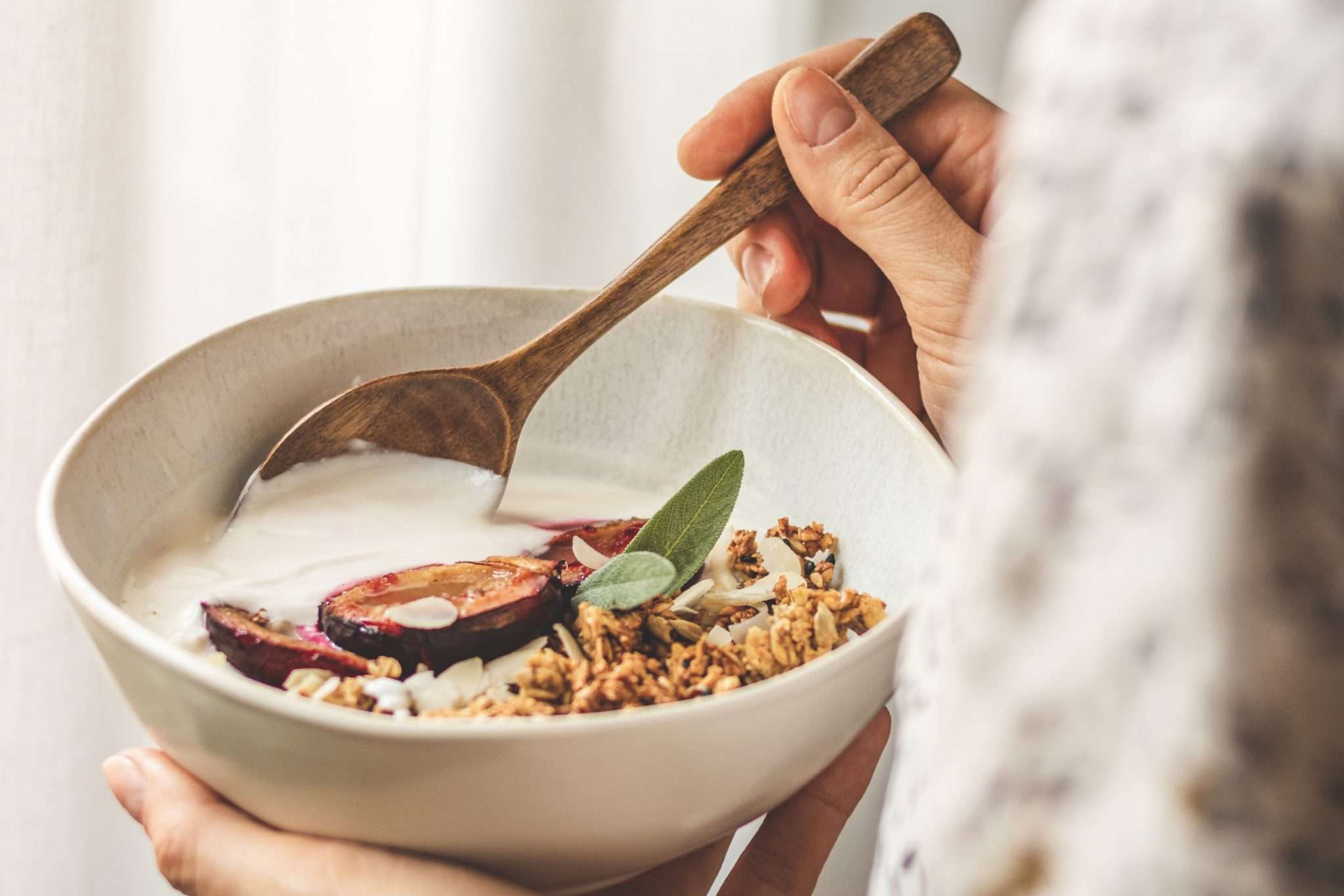If there’s one word synonymous with a sustainable lifestyle, it may just be “granola.” But it’s no longer the hippie stuff of decades past. From vegan to organic granola, these are the best to try.
Granola implies earthy, crunchy, the unshaved armpits of a barefooted treehugger. But these are, perhaps, worthy parallels, especially in this new morning of the climate-aware. Pour a bowl of vegan and organic granola for breakfast, as a yogurt topping, or eat it straight out of the box. Then go hug a tree. Better yet: plant one.
What is granola?
Today’s cereal aisles are bogged with options. From the classic flakes and Os to everything in between. But there’s no disguising granola. It’s a timeless breakfast staple. But what exactly is granola?
Granola was born out of the 1960s counterculture — the healthy alternative to the cereal aisle laden with unhealthy ingredients. Co-ops and communes alike took to making their own granola too out of silky oats, crunchy nuts, and touches of sweetness from dried fruits, maple, or honey. A hippie staple was born.
Granola is typically an oat-based cluster cereal. Beyond the oat base, there are myriad options to mix in, from the standard nuts and seeds to dried fruits, even chocolate, and superfoods. The dry ingredients are mixed together with sweeteners and oil and then baked until crisp and golden. The granola is then broken up into clusters or chunks (or left in larger pieces for granola bars).
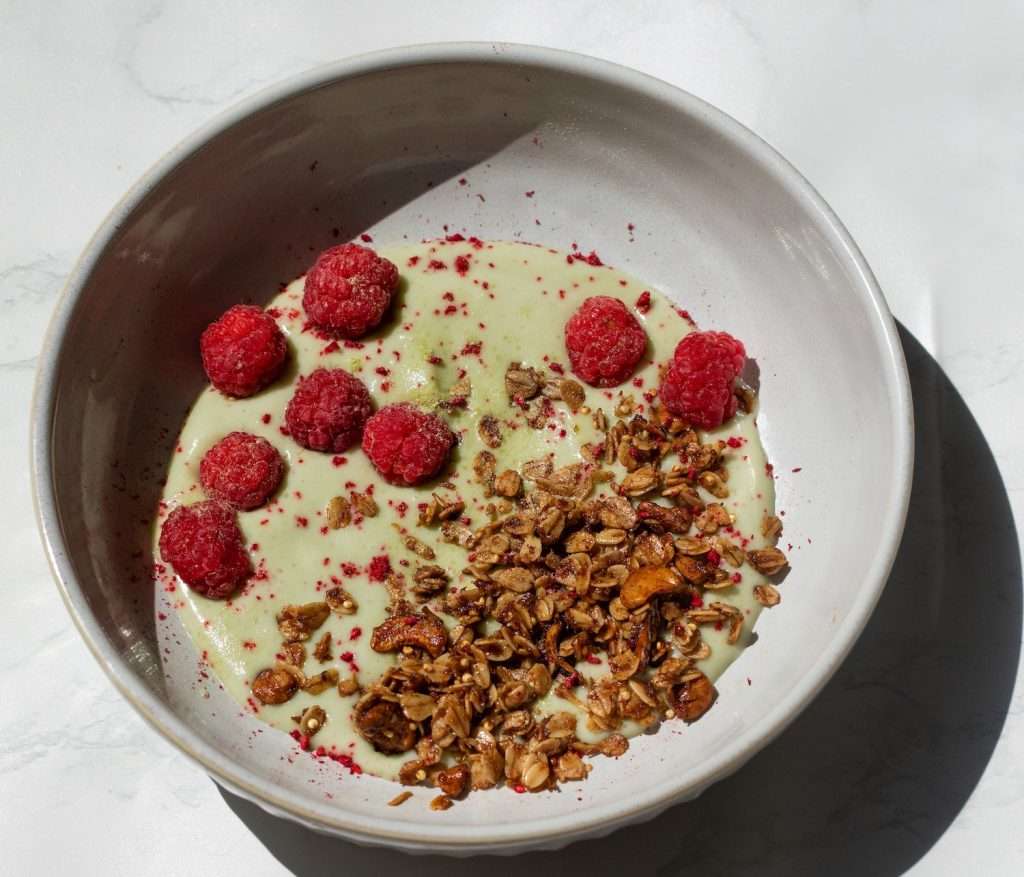
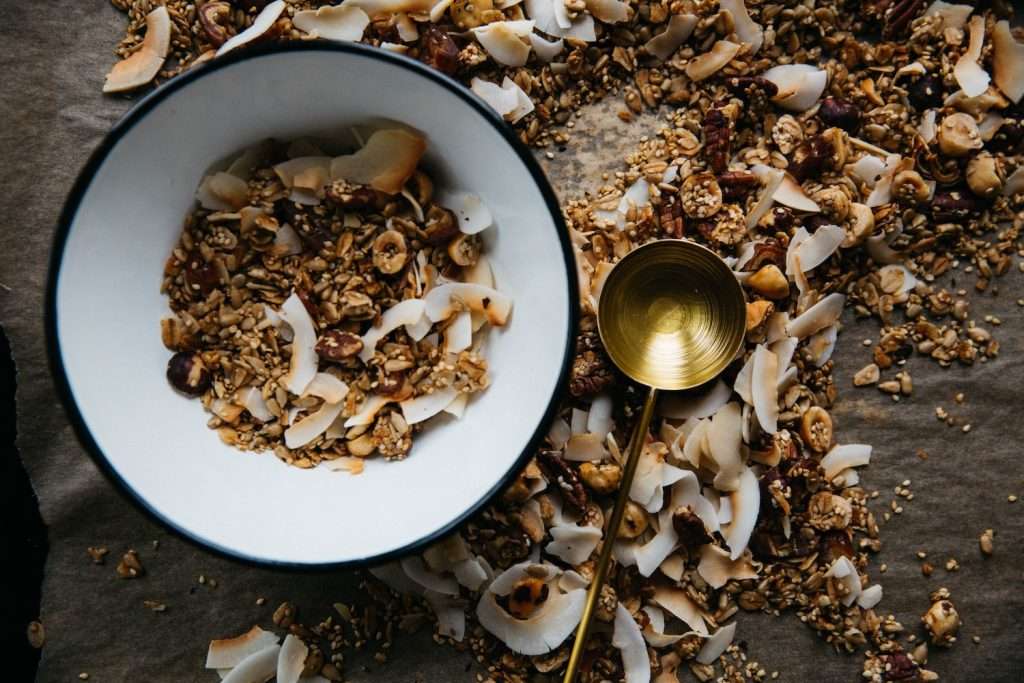
Granola or muesli?
If you’ve had both you may be quick to notice the difference. Muesli is perhaps best described as unbaked granola (we even include one on this list). It’s rolled oats, dried fruits, nuts, and sometimes seeds. A popular cereal in Switzerland and other parts of Europe, you can easily whip up your own muesli with oats and any add-ins you like — almonds, walnuts, chia seeds, raisins, coconut.
Granola is noticeable through its golden brown clusters, which happen as a result of baking the coated oats. If you’re looking for a less sweet breakfast option, muesli may be the optimal choice there as it doesn’t require the coating of sweetener.
Best vegan and organic granola brands
Just like our meat and dairy aisles are flipping to plant-based alternatives, the cereal aisle is getting a vegan makeover, too. A growing number of brands are launching vegan granola products for every taste preference. These ain’t your grandma’s flakes or Os.
Give these vegan and organic granolas a try.
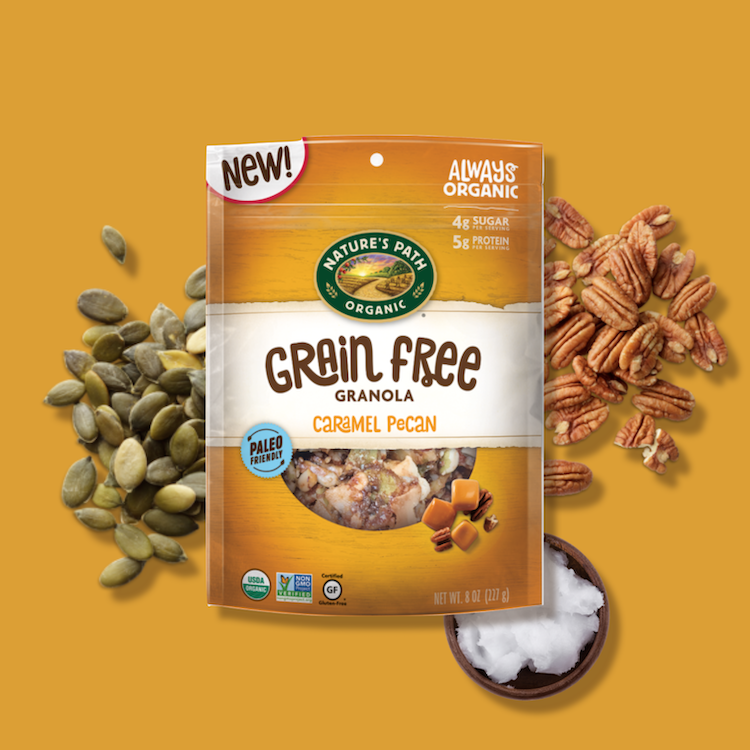
1. Nature’s Path Caramel Pecan Granola
A keto and paleo-friendly grain-free granola from the category leader, Nature’s Path, which is committed to organic ingredients. This delicious cereal contains pumpkin seeds, sunflower seeds, dried coconut, pecans, chia seeds, and comes in a nutty caramel flavor—perfect with oat milk or atop yogurt.
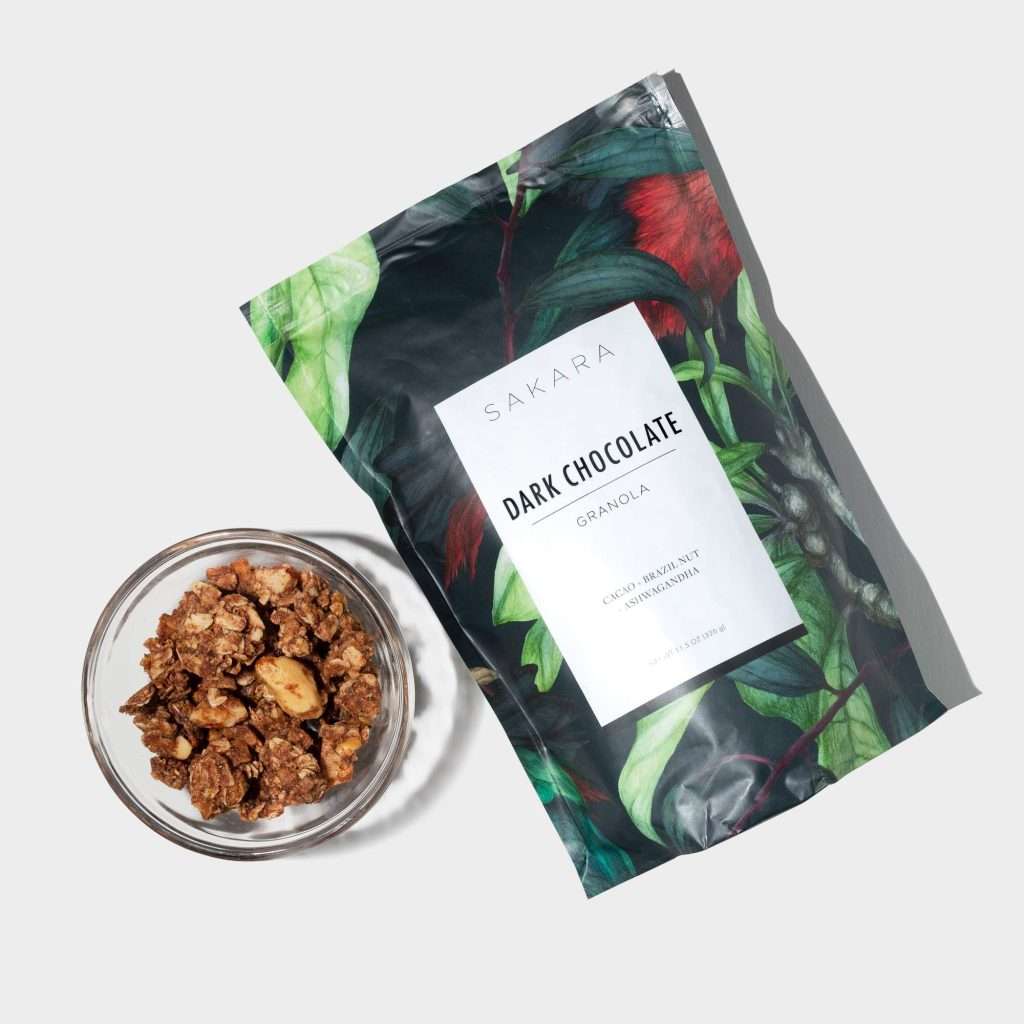
2. Sakara Life Dark Chocolate Superfood Granola With Brazil Nuts and Ashwagandha
Science meets spirit in this granola. Dark chocolate cacao and crunchy brazil nuts feel indulgent but they’re also full of healthy vitamins, minerals, and antioxidants with the superfood boost from ashwagandha—so indulge away!
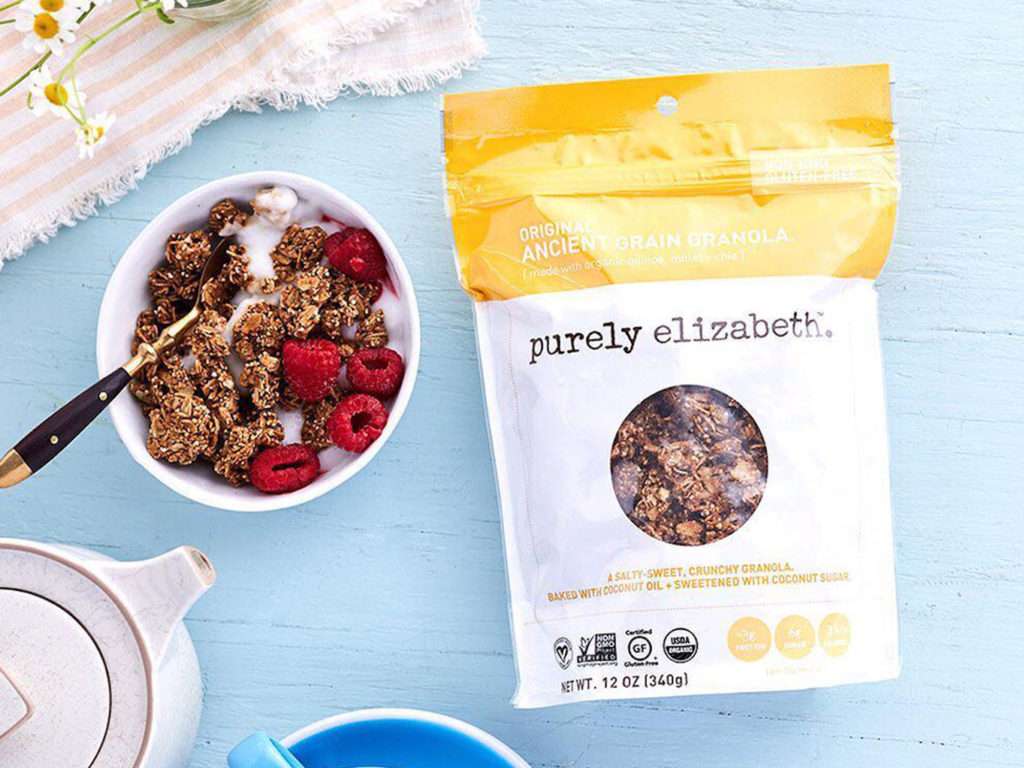
3. Purely Elizabeth Organic Ancient Grain Granola
Granola made with your health in mind. That’s the Purely Elizabeth philosophy. The company says “when you eat better, you feel better.” To make that happen, it uses superfoods with vibrant flavors and rich textures. Try any of the ancient grain flavors for an extraordinary way to start your day.
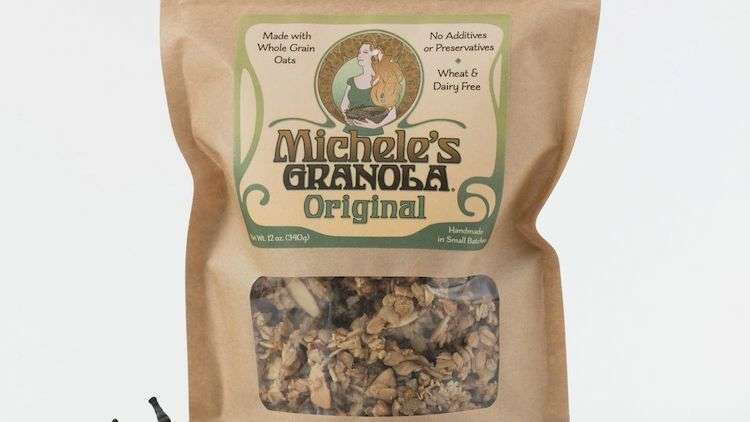
4. Michelle’s Organic Handmade Granola
The oats, nuts, and hint of sweetness make Michelle’s granola a pantry staple. Made from scratch with organic ingredients, the company doesn’t cut any corners for a fresh-out-of-the-oven taste every time.
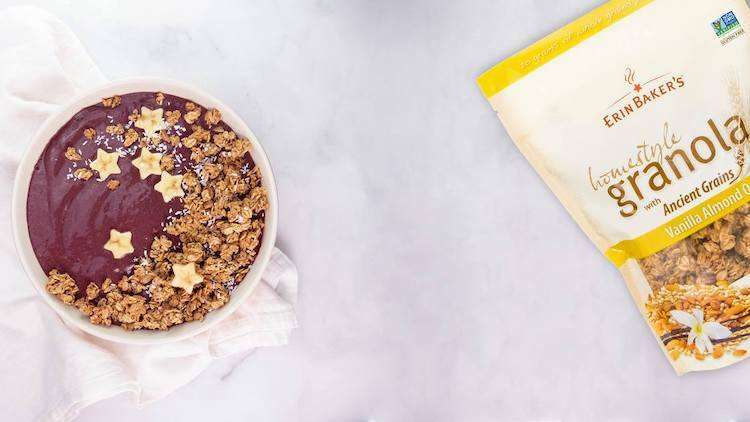
5. Erin Baker’s Homestyle Vanilla Almond Quinoa Granola
Erin Baker’s offers big clusters for big taste to get you on to the next adventure. “We bake with the finest ingredients and handcraft each batch so you know it’s going to be delicious.” Pair it with milk, yogurt, or grab a handful straight from the bag for a healthy, delicious snack.
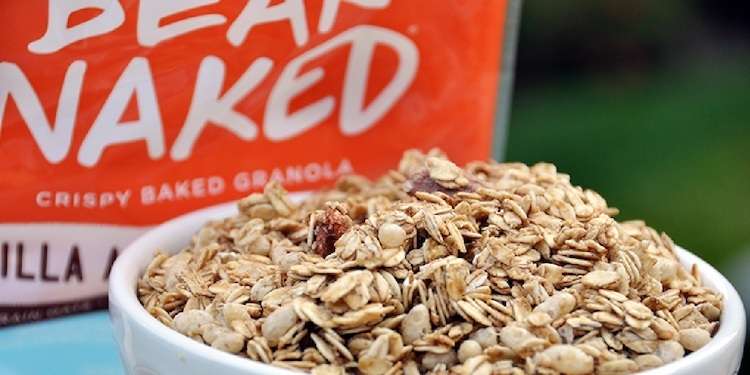
6. Bear Naked Fit V’nilla Almond Granola
Bear Naked, V’nilla Almond Fit Granola delivers a delicious blend of whole grains hearty nuts and a kiss of vanilla for a classic but never simple crunch.

7. Bear Naked Cacao and Cashew Butter Granola
Whole grain oats, brown rice syrup, almonds, cane sugar, oat bran, brown rice, ground flax seeds, and natural flavors taste like comfort. Start every day with a classic granola with a rich, yummy chocolate-nutty flavor.
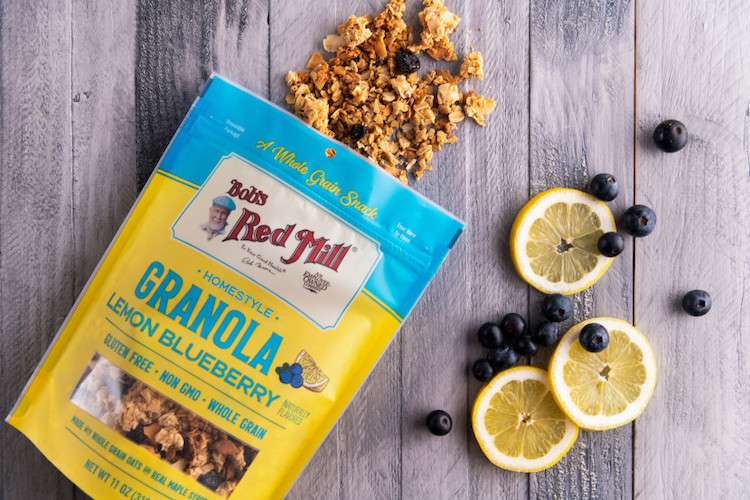
8. Bob’s Red Mill Lemon Blueberry Granola
Part of Bob’s Red Mill’s mission to bring whole grain food to every meal, this granola is perfectly toasted to a golden brown crispness. “When we came up with the recipe, we went back to basics — a handful of simple ingredients, including whole grain oats, real maple syrup, and tangy blueberries, baked to delicious perfection. The end result? Crunchy clusters that are rich in flavor (but not too sweet) and taste just like they came out of your own oven at home.”
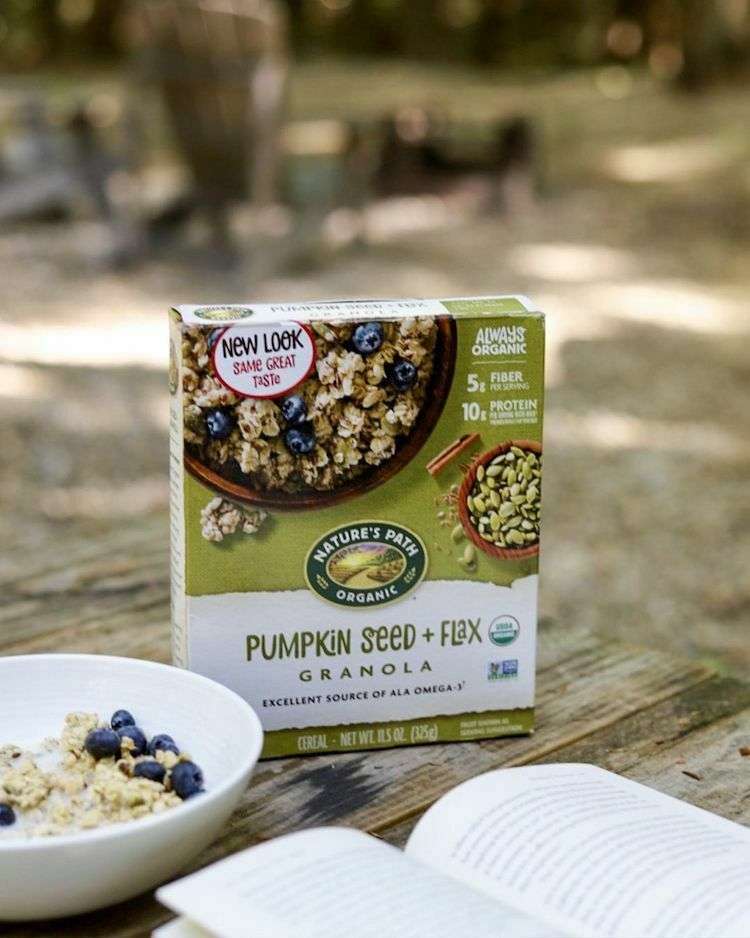
9. Nature’s Path Pumpkin Seed + Flax Granola
Crafted with real ingredients you can pronounce in order to keep you full and fueled on busy days, PFG has heart-healthy flax seeds, and pumpkin seeds that give you plant based-protein and fiber to keep you feeling strong all day long.
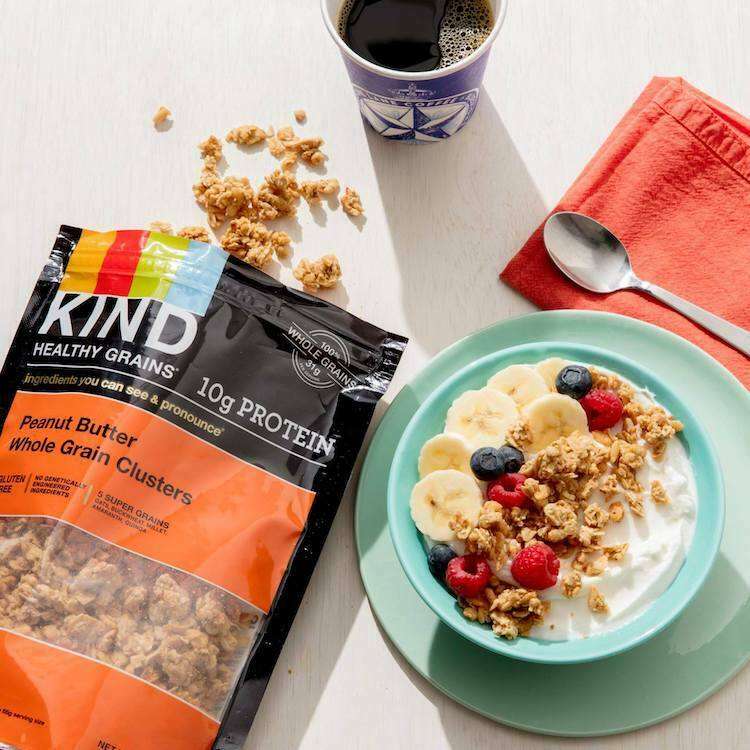
10. Kind Peanut Butter Cluster Granola
Oats, buckwheat, millet, amaranth, and quinoa combined with rich and creamy peanut butter for a perfect cluster packed with protein.
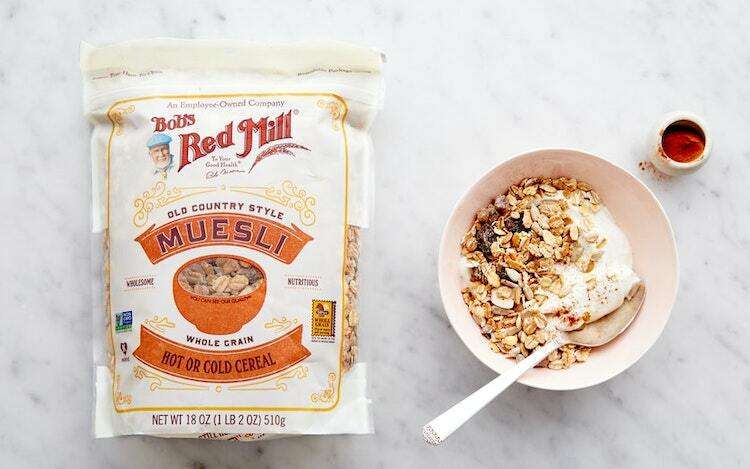
11. Bob’s Red Mill Old Country Style Muesli
It’s not granola — it’s muesli! This is whole oats and fruits you can serve hot or cold. And our favorite way to enjoy it? Mix half-and-half with cluster granola for a delicious oaty way to start your day.
Granola FAQs
Granola is often sweetened in one of two ways: maple syrup or honey. They offer a depth of flavor that table sugar doesn’t. But they also help with the binding process and cluster formation. There are other sweeteners used in granola, like brown rice syrup or agave nectar. Some use brown sugar, too. But for a healthier experience, it’s best to avoid granola that uses white sugar or corn syrup. And when you make your own, you can easily control the sugar.
The short answer: maybe. The long answer: unless specified as gluten-free, oats can contain residual gluten from equipment or storage shared with gluten-containing grains. For the celiac or severely gluten-sensitive, oats that aren’t certified as gluten-free may be problematic.
But some brands are foregoing the oats altogether and making granola with nuts and seeds instead. Labels should be clear indicators, but in some cases (like bulk bins), you may need to contact the companies directly to be sure the product is safe.
Related on Ethos:

